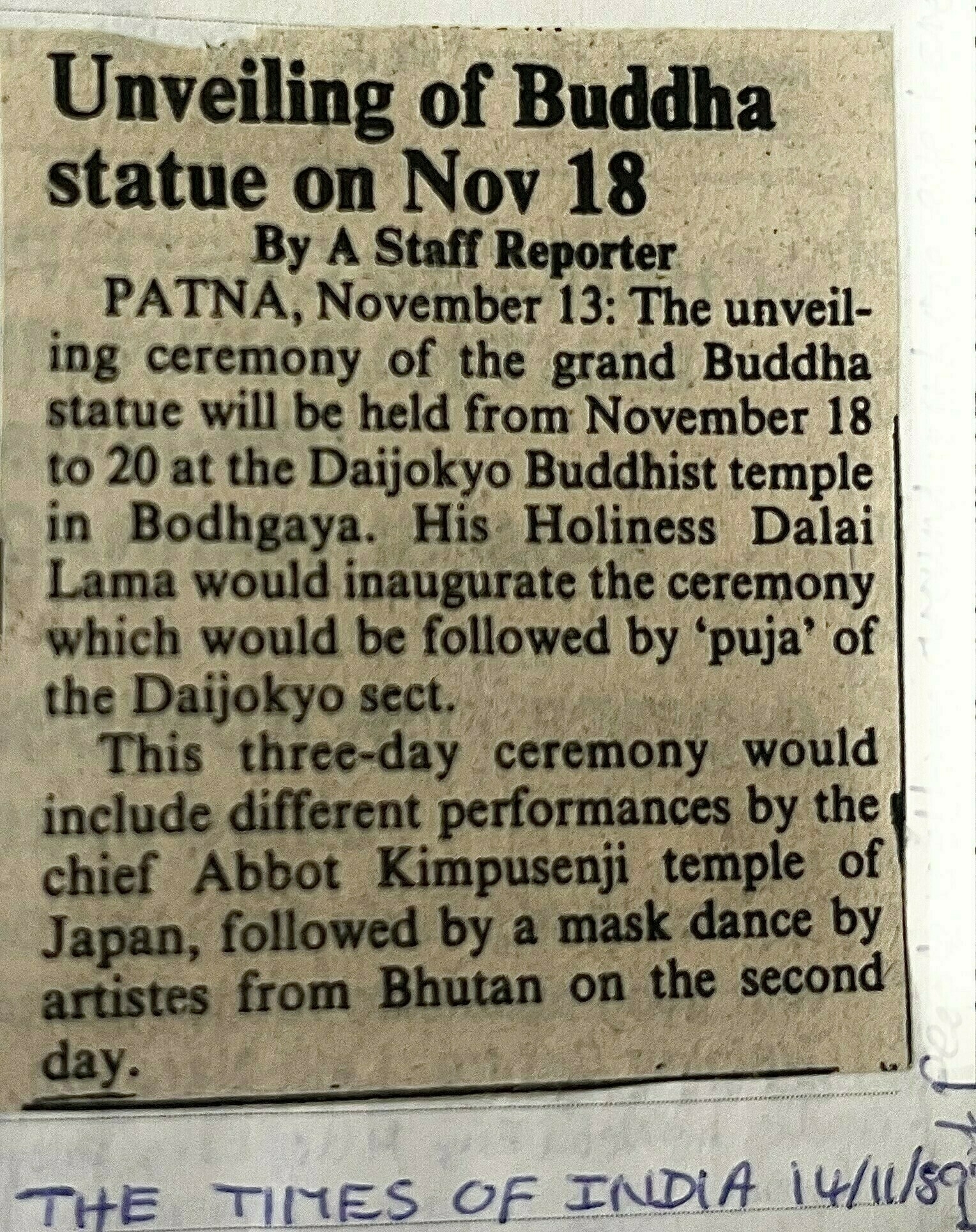The Story Behind the Photograph: From the Roof of a Bus

Road from Gaya to Bodhgaya from the roof of a bus
Following my time in Patna, I continued my journey onto Bodhgaya by catching a train to the city of Gaya. I travelled to Gaya by train along with an American, Ray, whom I had met in Patna. I had an omelette for breakfast in my hotel room, settled up with the hotel owner and then caught a rickshaw along with Ray to the railway station. There was a lot of misunderstanding between us and the rickshaw driver, and when we settled up on arrival we weren’t sure if his annoyance was because we’d paid too little, or if it was a show to get some more money? We chose to leave things as they were. I went to buy a newspaper to read on the journey and then went to find our train and carriage. On reaching our second class seats there was still plenty of room on board. However, the train soon filled up and by the time that we were underway seating became tight and squashed even though we thought that the express train that we were on would negate that experience. This was our first Indian train and we were still learning.
Seated, I picked up the newspaper that I had bought earlier. I had a quick flick through it and passed it onto Ray, not engaging much with the stories. Ray quickly passed it back to me, pointing out the article below.

I couldn’t believe it. Just to say that at that time I didn’t really know who the Dalai Lama was. I was aware of his existence, but that was about it. And this was 1989. He wasn’t the world figure that he is today. Subsequently, people who I met who had been around him for a number of years prior said that 1989 was the year that things changed for His Holiness. That was the year that he was awarded the Nobel Peace Prize and really came to the world’s attention.
All of this aside, I was still excited. I had an unexpected but growing interest in Buddhism, was traveling to Bodhgaya because of this (I did not know of the village’s existence when I left home just over four months earlier), and now I find out that the Dalai Lama would be there at the same time that I was visiting.
We spent a day in Gaya, just exploring the streets making up the city. As in Patna we encountered demonstrations related to the upcoming elections. Nothing to disrupt our day, but another presence in the town. I had read and noted in my journal that Gaya,
is 2nd only to Varanasi in its sanctity.
Here is what I wrote about some of those wanderings.
We headed off through the crowded shopping streets, street vendors selling peanuts, fruits and a few other concoctions. We disappeared down some further backstreets, finding ourselves staired [sic] at a lot. We passed what appeared to be a loading bay for sacks of this and that. Back streets were filthy, really dirty. Stagnant black, scummy water in open drains. Piles of rubbish, there is one across the road from the hotel which the cows make good use of. Muddy streets, black mud, and ponds lying in the middle of the road. Rickshaws go by ringing bells, bicycles go by ringing bells, scouters go by making rasping noises with horns, autorickshaws, later in the day heat & dust.
We found the Vishnupad Mandir on the banks of the Phalgu River on which Gaya itself also sits. Not being Hindus, we were not allowed in the temple, but that did not matter. Gaya was offering us a lot to take in as it was. The river itself was more like a series of smaller rivers right now. There were people down by the river washing clothes, hanging around or making their way across. Dogs and cows joined them.

The Phalgu River in Gaya
Ray and I found a chai store where we sat down to eat, drink and watch life go by - a favourite occupation of mine.
The next day we travelled south to Bodhgaya. Rickshaw drivers and private vehicle owners tried to tempt us with rides for the 13km journey to Gaya, but we opted for the cheapest option - a Rs1.50 bus journey and the subject matter of the photograph at the top of this piece. We sat on the the roof to enjoy the journey and better see the environment that we were passing through. Leaving Gaya we had to be careful of low hanging power cables, but once out of town that was no longer a bother. Again, I’ll let my journal tell the tale,
…through flat agricultural land, small temples here and there, horse carts, autorickshaws, buses, horns honking. On our left was the dried up River Phalgu.
Arriving in Bodhgaya we had a chai before going off looking for accommodation. I scouted while Ray watched our backpacks. Finally housed in a hotel we went off to take a look around the village and see what Bodhgaya had install for us.